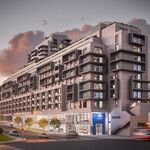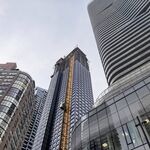diminutive
Active Member
Question, why even in fantasy, all the maps show nothing but completely straight lines following the grid? Do they really have to be?
Stations should go where demand is, instead of giving a station just because it happens on the line. For example, Yonge/Lawrence and York Mills don't really deserve stations there but they have just because they are on Yonge st. If designed a better way, the line could potentially give more densely populate area DIRECT subway access (not just a feeder bus). How many people are actually within walking distance to Lawrence or York Mills station? The urge to have all lines on straight lines in Toronto is uncanny.
Why pick on Lawrence and York Mills? Both are actually pretty well used. Above subway averages, at least.
I guess theoretically, the reason you tend to have lines following the street grid is because feeder routes work on the street grid, and those feeder routes are where most of the subway's ridership comes from.




